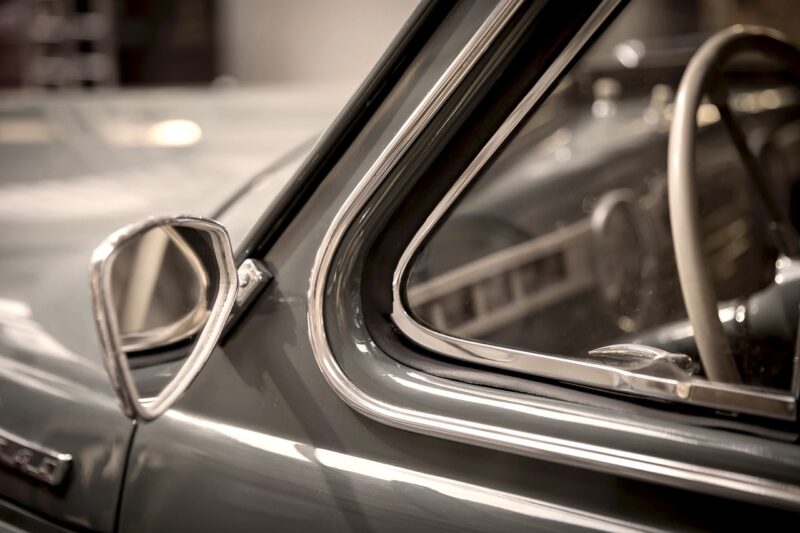How Car Designers Create Iconic Looks That Stand the Test of Time
November 11, 2024

Car design is a blend ofartistry, engineering, and luxurious imagination. Iconic car models we recognize today have often become cultural symbols, reflecting both aesthetic sensibilities and technological advancements. So, what makes one car’s design resonate with people for generations, while others fade into obscurity? This article takes a deep dive into the world of automobile design and unravels the process behind creating iconic looks that stand the test of time.
1. Understanding the Essence of Timeless Design
Timelessness in car design transcends mere aesthetics. It intermingles with practicality, innovation, and cultural significance. Great design tells a story, evokes emotions, and welcomes innovation while respecting heritage. Key aspects that contribute to timeless design include:
- Simplicity: Stripping down components to their essentials often results in clean, memorable lines. An example is the Volkswagen Beetle, which combines simplicity with distinctiveness.
- Proportionality: Icons often exhibit impeccable proportions, as seen in the classic Porsche 911. Designers must balance length, width, and height to create a visually pleasing silhouette.
- Cultural Relevance: Successful designs often reflect or challenge prevailing cultural sentiments, aiding their social context. The Ford Mustang, for example, symbolizes the American muscle car era’s exuberance and rebellion.
These elements form the bedrock of creating designs that endure across generations. However, capturing such essence demands rigorous processes and creative exploration.
2. The Car Design Process: From Concept to Creation
Car design is a collaborative effort involving multiple departments. It typically unfolds in several stages:
a. Preliminary Research and Inspiration
Design teams often begin by studying trends, styles, and cultural movements. They gather visual references, exploring different design philosophies—ranging from Art Deco to Futurism—to inspire their concepts.
b. Sketching and Concept Development
After gathering insights, designers start sketching. At this stage, sketches serve as a medium to experiment with shapes, forms, and proportions. Quick ideation allows them to explore various directions without heavy material costs.
c. Digital Rendering and Modeling
The best designs are then selected for further development using 3D modeling software. This technology allows designers to create lifelike representations, consider aerodynamics, and visualize how parts fit together. The shift from 2D to 3D highlights design flaws that might not be visible in sketches.
d. Prototyping
Once satisfied with the model, a physical prototype is created, often from clay or 3D printing. This stage allows for hands-on exploration of the design’s form, texture, and scale, along with adjustments based on feedback.
e. Testing and Final Adjustments
Prototypes undergo rigorous testing for both aesthetics and functionality. Changes are made based on performance data, user feedback, and market positioning before approving the design for production.
Each step blends creativity with technology and functionality, ensuring that the final product meets aesthetic expectations while being practical.
3. Key Designers and Their Influence on Automotive Aesthetics
Throughout history, several renowned car designers have imparted their unique philosophies on automobile aesthetics:
a. Enzo Ferrari
As the founder of Ferrari, Enzo Ferrari’s vision integrated elegance with raw power. He believed cars should elicit emotion, and his designs continue to be worshiped as symbols of speed and prestige.
b. Giorgetto Giugiaro
Often considered one of the most influential automotive designers, Giugiaro’s work includes the iconic DeLorean DMC-12 and the Volkswagen Golf. His designs exemplify functionality while pushing the boundaries of innovation.
c. Sir Alec Issigonis
The genius behind the Mini, Issigonis focused on maximizing space within compact dimensions. His simplified designs challenged common notions in vehicle proportions, leaving a lasting impression on the automotive world.
4. The Role of Technology in Car Design
Technology has revolutionized car design, enhancing efficiency without compromising aesthetics:
a. CAD Software
Computer-Aided Design (CAD) facilitates high precision in modeling, allowing designers to visualize every aspect before going into production. This technology supports collaborative efforts in design, leading to improved results.
b. Virtual Reality (VR)
VR allows designers and stakeholders to experience a virtual version of the car at any stage in development. This immersive experience can provide better insights into design flaws and user experience.
c. Sustainable Materials
With an increasing focus on sustainability, designers are incorporating alternative materials that respond to environmental challenges without forgoing structural integrity or aesthetics. Innovations in bio-based materials offer exciting new avenues for the future of car design.
5. The Future of Car Design: Trends to Watch
As we look ahead, several trends indicate the future direction of car design:
- Electrification: As electric vehicles rise in popularity, designs will shift to accommodate unique structural requirements and enhance aerodynamics for efficiency.
- User-Centric Design: A focus on occupant experience will shape future designs, leading to more spacious interiors, advanced infotainment systems, and multifunctional spaces.
- Autonomous Vehicles: As drivers shift from controlling their vehicles to being passengers, the design language will change significantly, necessitating attention to safety and comfort in new ways.
By integrating these trends with timeless design principles, car designers can continue to create vehicles that connect with people emotionally and remain relevant throughout the years.
Conclusion
Designing a car that stands the test of time is no small feat. It requires a thoughtful blending of artistic vision, cutting-edge technology, cultural relevance, and historical context. The most successful automotive designs—those we regard as iconic—stem from a unique design process fueled by passion and innovation, shaping forms that resonate deeply with consumers and reflecting shifting social values.
As we forge ahead into an era where technology and sustainability will dominate the automotive landscape, the foundation laid by these principles will guide the way for future designs, promising that timelessness—much like great cars—will remain at the heart of automotive aesthetics.








